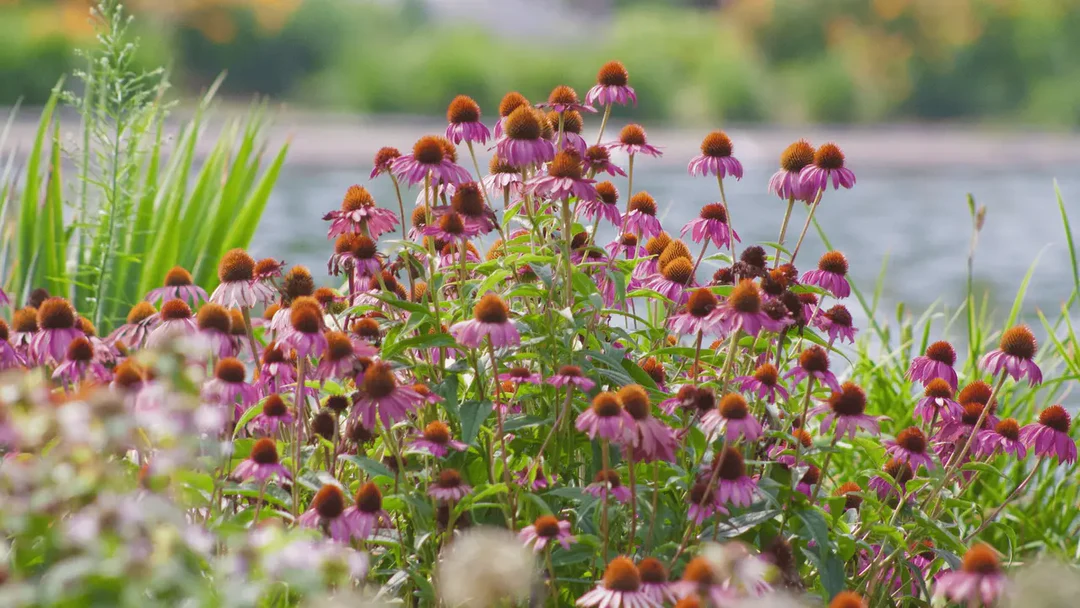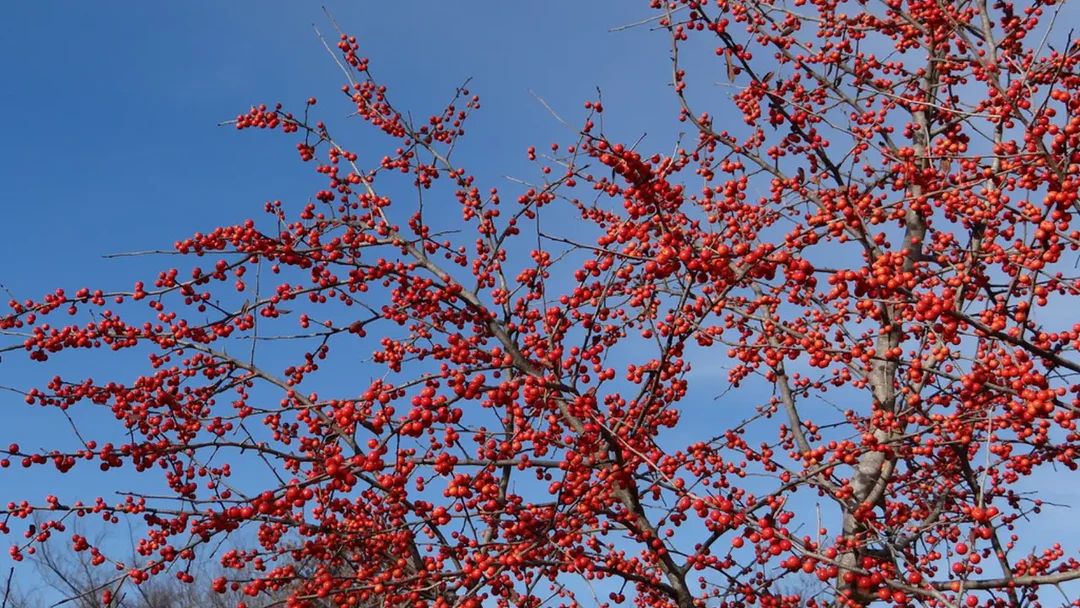10 Texas Native Perennials Perfect for DIY Gardening in North Texas

Gardening in North Texas can be rewarding, particularly when choosing the right plants. Native perennials are invaluable to gardeners because they are well-suited to the local climate, require less maintenance, and are often resistant to regional pests. This list will explore some of the best Texas native perennials that can thrive in your North Texas garden, enhancing both its beauty and sustainability as you pursue your gardening efforts.
1. The Resilience of Black-eyed Susan
Black-eyed Susans are celebrated for their cheerful appearance. These bright yellow flowers, featuring dark centers, are drought-tolerant and attract pollinators like bees and butterflies. This makes them a fantastic addition to any garden in North Texas. The striking golden petals of Black-eyed Susans bring a joyful touch to garden beds. Their low maintenance requirements make them ideal for DIY gardening beginners. Imagine a field of golden blooms gently swaying in the Texas breeze—a captivating sight that helps sustain local ecosystems by creating pollinator-friendly spaces.
Planting Black-eyed Susans can be a delightful experience. These flowers serve as a cornerstone in any vibrant native perennial garden, flowering generously from late summer into fall. These perennials are adaptable to a variety of soil types and can thrive equally well in containers or in the ground. Their versatility cannot be overstated. As they bloom, Black-eyed Susans provide a lively backdrop for dynamic garden designs.
2. Colorful Charm of Texas Sage
Texas Sage features dusty green foliage and striking purple blooms. This hardy shrub thrives in hot conditions and requires minimal water once established, making it ideal for low-maintenance gardening. There is a certain charm to how Texas Sage adds a silvery touch to landscapes. Its natural drought resistance makes it an eco-friendly choice for North Texas gardens that prioritize sustainability and longevity.
One of the wonderful features of Texas Sage is how it reacts to rainfall; the shrub blooms spontaneously, creating a stunning and temporary display that gardeners appreciate. Adding Texas Sage to your garden can bring a sense of adventure. Scientifically known as Leucophyllum frutescens, it produces clusters of blossoms that also attract pollinators.
While it requires little care, the blooming beauty of this plant makes a strong statement of resilience, captivating both human visitors and wildlife alike. Whether used as border hedging or as a vibrant accent in a larger garden bed, the versatility of Texas Sage enhances your gardening design plans.
3. The Elegance of Purple Coneflower
Purple Coneflowers bring elegance to any garden with their vibrant petals and distinctive cone-shaped centers. They are easy to grow, resistant to deer, and highly attractive to pollinators. This perennial plant offers a long-lasting display of purple blossoms, making it a perfect or casual and formal garden design. Its captivating simplicity and robust nature make it ideal for those new to DIY gardening.
The beauty of the Purple Coneflower goes beyond its visual appeal. They provide nectar and habitat for various pollinators, especially during the sunnier months. These versatile perennials can be planted in large groups for a stunning display or mixed with other plants for vibrancy. With regular sunlight, occasional watering, and some pruning, these flowers can quickly become reliable companions in any gardener’s journey.
4. Lantana’s Vibrant Beauty
Texas Lantana is celebrated for clusters of multicolored blooms and its ability to thrive in poor soil conditions. This perennial invites a flurry of butterflies into any garden. Lantana’s resilience is noteworthy, unlike other perennials that might shy away from challenging environments. Its bright clusters, often yellows, oranges, and reds, create a vivacious palette in any garden setup. Their sprawling nature, usually spilling over planters or wandering freely across garden beds, brings a dynamic, lively element to garden designs.
In addition to stunning blooms and butterfly attraction, Lantana’s growth habit makes it an enthusiastic border or ground cover plant for sun-soaked parts of your garden. Spring and summer bring continuous flowering, creating an irresistible blaze that transforms ordinary spaces into vibrant havens. Lantana’s easy-going nature means it’s self-sufficient mainly once established, requiring minimal attention from gardeners—a perfect fit for busy individuals keen on maintaining a beautiful, flourishing garden.
5. The Delicate Blooms of Columbine
Columbines bring delicate beauty with their unique, intricate flowers. They prefer partially shaded areas, providing versatility in planting locations within your garden. The allure of the Columbine lies in its artful asymmetry. Graceful and elegant, each bloom showcases long spurred petals that tap into a fairy-tale aesthetic ideal for serene garden nooks. Beyond mere aesthetic appeal, Columbines are beloved for their adaptability, making them suitable companions for more daring garden layouts.
These enchanting perennials flower in late spring in vibrant colors ranging from red to pink, yellow, or blue. Their bell-like structure is eye-catching and attractive to hummingbirds, drawing a diverse ecosystem into your green space. Columbines represent a gardener’s dream by contributing to both the visual tapestry and the biodiversity of gardens with flair and assurance.
The gentle presence of columbines enhances quieter moments in the garden. Planting them amid larger perennials or at the edges of shaded woodland paths can bring an ethereal quality to garden design. Their adaptability and understated charm make them versatile for gardeners seeking to create layered outdoor environments. Columbines seamlessly integrate and thrive, whether you prefer tidy beds or a more naturalistic approach.
6. Yarrow for a Burst of Yellow
Yarrow is a robust perennial with bright yellow, flat-topped clusters that withstand heat and drought, making it a steadfast option for North Texas landscapes. It’s a plant that wears its resilience like a badge of honor—unfazed by challenging growing conditions and requiring minimal care. Ideal for novice gardeners, Yarrows can quickly fill any garden spot with sunshine, bright blooms, and fern-like foliage. The cheerful appearance of Yarrow adds an enduring charm to North Texas gardens, offering versatility enhanced by its fortitude.
From formal gardens to wildflower prairies, Yarrow continues to captivate with its vibrant personality. It offers more than just a splash of color; it plays a crucial role in supporting beneficial insects and promoting a balanced ecosystem. Yarrow’s ability to adapt makes it a reliable garden workhorse. Whether you interplant it with grasses or alongside other wildflowers, its enduring blooms and textured foliage provide design versatility for a year-round aesthetic.
7. Turk’s Cap’s Versatile Blooms
Turk’s Cap features bright red flowers that resemble a turban. It performs well in sun or shade, providing a pop of color and attracting hummingbirds to your garden. A practical favorite among Texas gardeners for its resilience and beauty, Turk’s Cap’s distinctive foliage and blossoms add whimsy to any planting scheme. Furthermore, these perennials are tolerant of a wide range of soil conditions, from poor to rich, and accommodate different sunlight exposures effortlessly.
Its dense growth habit can create lush borders or act as natural ground cover, filling spaces with minimal gardener input. Flowering from summer to fall, Turk’s Cap ensures an extended bloom period that effortlessly attracts pollinators. Once established, incorporating it into your garden provides a vibrant visual uplift and a guarantee of sustainability through minimal water dependency. The multiple benefits of Turk’s Cap make it an invaluable addition to any North Texas garden aiming for environmental harmony.
8. The Blue Promise of Mealy Salvia
Salvia’s stunning blue spikes are a standout in any garden. This hardy perennial is heat- and drought-tolerant, ensuring longevity across seasons. Salvia, often known as the ‘sage of summer,’ brings endless ornamental value. Its flowering spikes’ deep, cool hues make it an eye-catching focal point amidst warmer-colored perennials. Salvia offers distinct guidance and impactful aesthetics for gardeners who incorporate perennial blooms that transition seamlessly through seasons.
9. Butterfly Weed’s Pollinator Appeal
As its name suggests, Butterfly Weed is a magnet for butterflies. Its bright orange blooms are beautiful and crucial for supporting native butterfly populations. A friend to winged beauties, Butterfly Weed, helps sustain life cycles integral to garden ecology. While elegant, this perennial’s function transcends aesthetics, promoting biodiversity across our North Texas gardens. As a host plant for numerous butterfly species, including the Monarch, cultivating Butterfly Weed significantly aids local conservation efforts.
Besides the ecological benefits, the presence of Butterfly Weeds adds dimension to your personal garden space, bridging beauty with purpose. Its radiant orange accents are highlighted further in mixed perennial borders, partnering beautifully with blues, purples, and greens. Once rooted, this perennial requires little attention, apart from occasional deadheading to encourage new blooms. Transforming everyday gardens into havens of ecological stewardship, Butterfly Weed stands resolute as a symbol of natural elegance.
10. The Fragrant Draw of Autumn Sage
Autumn Sage offers aromatic foliage and bright red flowers. It blooms from spring through fall, providing a consistent splash of color and attracting beneficial insects. One might argue it’s a year-round delight for the senses as its fragrant leaves and vibrant blooms infuse garden atmospheres with invigoration. Autumn Sage thrives under the sun, withstanding dry spells without wilting, a feature that endears it to the hands-off gardener looking for robust, sensory pleasure without excessive maintenance.
Beyond the olfactory appeal, Autumn Sage contributes vivid splashes of crimson, becoming a resonant signal amidst perennial greenery. As this Texas native blooms perpetually until frost, it’s a steadfast garden fixture in shifting Texan climates. Its inclusion not only adds visual and aromatic zest but nurtures habitats for moths and bees, supporting a local narrative of biodiversity. Leveraging Autumn Sage’s beauty and tenacity can help cultivate striking North Texas garden spaces designed to last.








Leave a comment